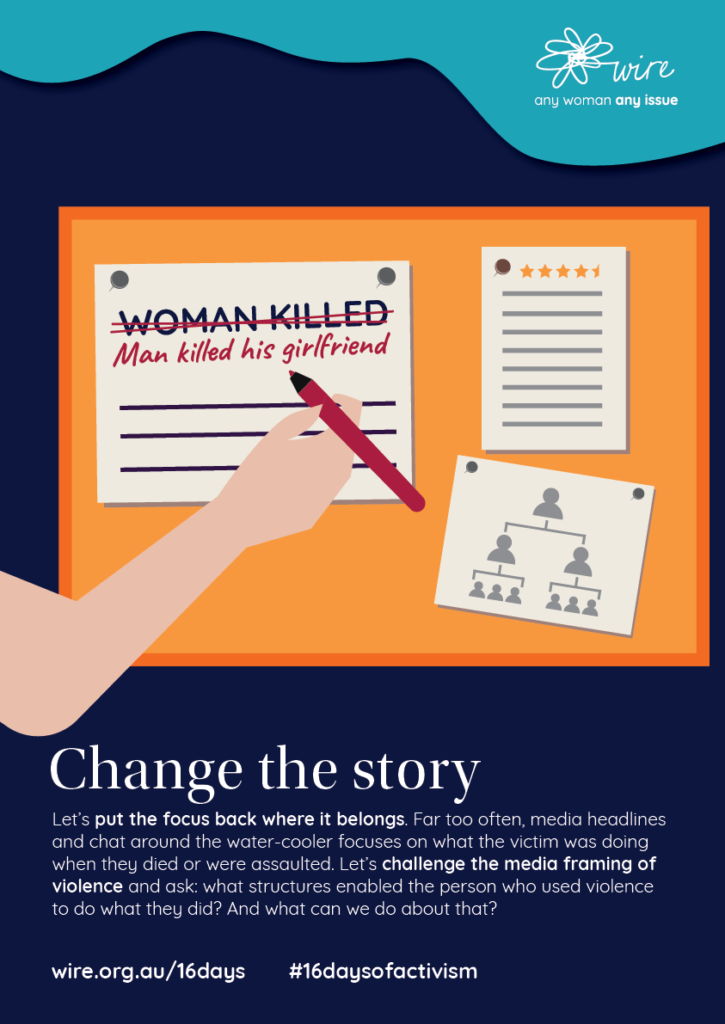Sustainable and Transformative Employment Pathways (STEP)
In 2019, WIRE established an innovative project designed to assist family ...

The media has a powerful role in how it presents — frames — violence against women, non-binary and gender-diverse folks. And it has a fundamental role to play in stopping rape culture. Let’s challenge the media framing of violence that blames victims and instead use the power of language in service of survivors, not those who use violence.
Let’s put the focus back where it belongs. Far too often, media headlines and chat around the water-cooler focuses on what the victim-survivor was doing when they died or were assaulted.
The media has a powerful role in how it presents — frames — violence against women, non-binary and gender-diverse folks. And it has a fundamental role to play in stopping rape culture.
It’s slowly improving, but not fast enough. Repeating myths reinforces them. We need a society where women who come forward as survivors of sexual violence are believed. We need a society where the media names violence for what it is, for example ‘family violence’, and where respectful language in reporting violence seeks to uphold the dignity and humanity of the victim-survivors and their families.
Let’s challenge the media framing of violence that blames victims and instead use the power of language in service of survivors, not those who use violence.
What would happen if we ask: what structures enabled the person who used violence to do what they did?
There are a variety of ways we can counter this public narrative about trusting women’s stories and the real drivers for family violence.
Every year, between November 25 — the International Day for the Elimination of Violence Against Women — and December 10 — International Human Rights Day — there are 16 Days of Activism Against Gender-based Violence.
This year we’ve created a series of posters for you to print out at work, home or your local library, and to put up in your kitchen, community hall, meeting room at work — wherever you like. Help create a world where women, nonbinary and gender-diverse people are safe, respected, empowered and able to make genuine choices in their lives.
Violence towards women, nonbinary and gender-diverse people is a community problem. Everyone in the community, from schools to sporting clubs, can play a role in changing the structures, norms and practices that lead to gender-based violence.
Some of these actions will be individual and some will be collective: gender-based violence is a structural issue that we all need to work together to address.